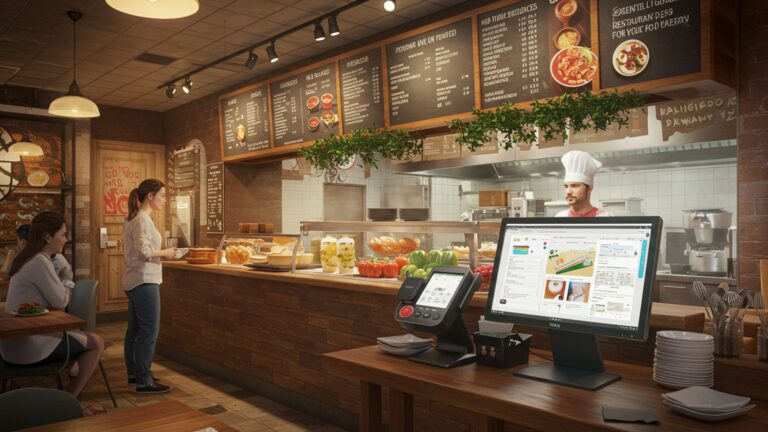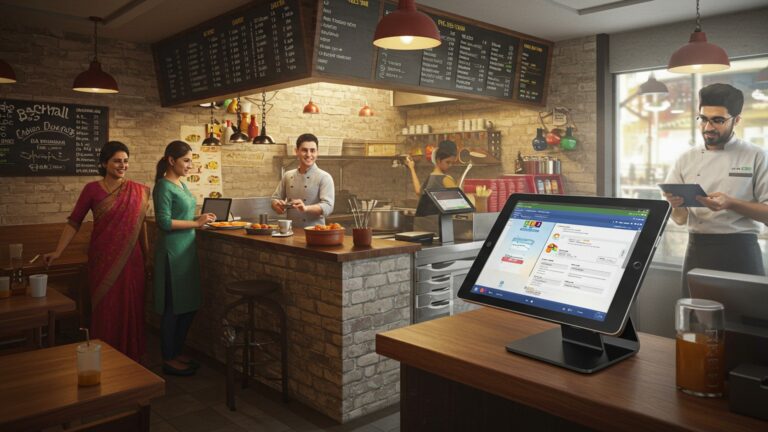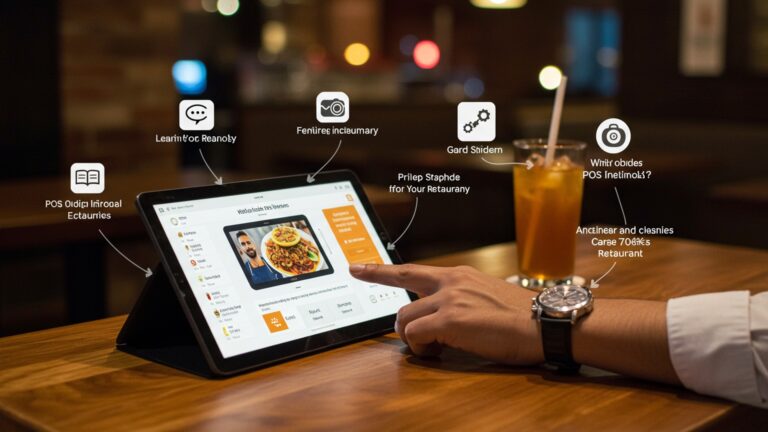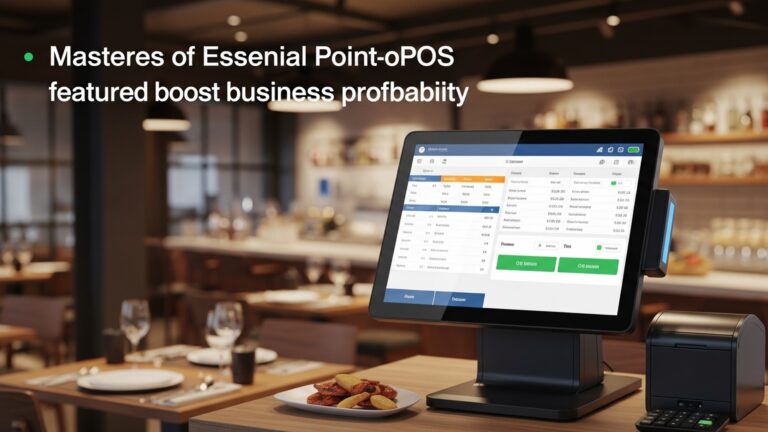Discover 5 Best POS Systems for Your India Restaurant Guide
Navigating India’s competitive restaurant industry demands more than just exceptional cuisine; it requires operational precision to thrive. The digital transformation has made a modern POS system an indispensable asset, moving beyond basic billing to intelligent management. Today, the best POS system for restaurants India seamlessly integrates diverse operations, from real-time inventory tracking for perishable ingredients to efficient table management and multi-channel order processing, crucial for both dine-in and booming online delivery platforms like Swiggy and Zomato. These advanced platforms also facilitate instant UPI transactions and ensure GST compliance, providing invaluable data analytics for optimizing menu performance and staff allocation. This strategic deployment significantly elevates service speed and guest satisfaction, directly impacting profitability in a rapidly evolving market. 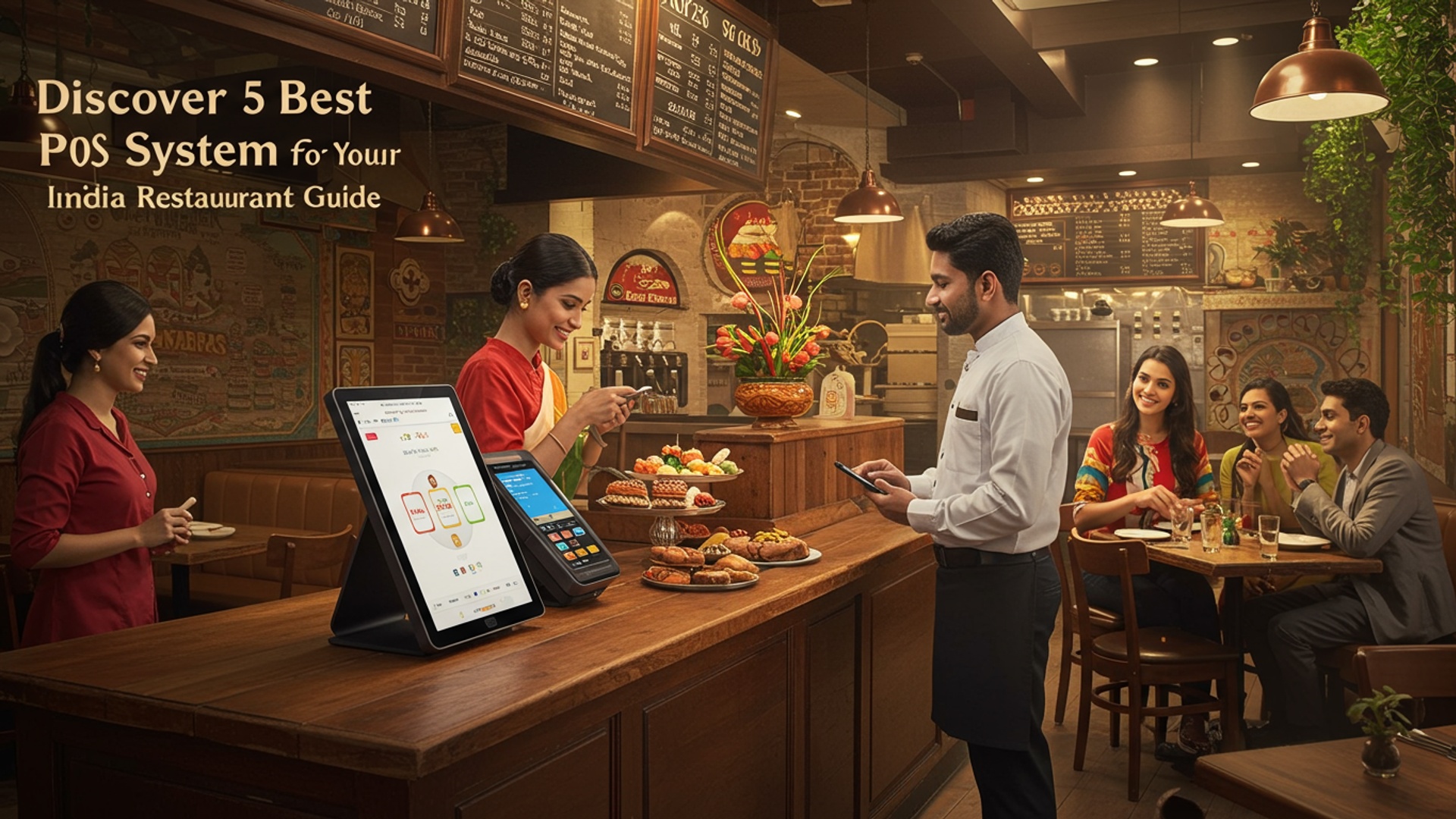
Understanding the Modern Restaurant POS System
In the dynamic and often bustling world of Indian cuisine, managing operations efficiently is paramount to success. Gone are the days of manual order-taking, paper KOTs (Kitchen Order Tickets). laborious inventory counts. Today, a robust Point of Sale (POS) system is not just a convenience; it’s the central nervous system of any thriving restaurant, cafe, or QSR (Quick Service Restaurant) across India.
So, what exactly is a POS system? At its core, a POS system is a combination of hardware and software that processes transactions. its capabilities extend far beyond simple billing. For a restaurant, it’s an integrated solution designed to streamline every aspect of daily operations, from the moment a customer places an order to the final financial report.
Why a POS System is Indispensable for Indian Restaurants
The Indian restaurant landscape presents unique challenges and opportunities. From managing diverse payment methods like UPI, credit cards. cash, to handling complex menus with regional variations and integrating with numerous food delivery platforms, a specialized POS system is crucial. Here’s why:
- Enhanced Efficiency: Automates order processing, reduces manual errors. speeds up service, especially during peak hours.
- Improved Customer Experience: Faster billing, accurate orders. personalized loyalty programs lead to happier customers.
- Inventory Control: Tracks ingredients, reduces waste. helps in optimizing purchasing, directly impacting profitability.
- Data-Driven Decisions: Provides valuable insights into sales trends, popular dishes, staff performance. peak times, enabling informed business strategies.
- Seamless Integrations: Connects with online food aggregators (Zomato, Swiggy), accounting software. payment gateways, simplifying complex workflows.
Key Components of a Robust Restaurant POS
A comprehensive restaurant POS system typically includes:
- Hardware: Touchscreen monitors, receipt printers, cash drawers, barcode scanners. card readers.
- Software: The core application that manages orders, sales, inventory. reporting.
- Payment Processing: Integration with various payment gateways to accept digital and traditional payments.
- Kitchen Display System (KDS): Digital screens in the kitchen that display orders, improving communication and speed.
- Customer Relationship Management (CRM): Modules to manage customer data, loyalty programs. feedback.
Essential Features to Look for in a Restaurant POS for India
Choosing the best POS system for restaurants India requires a careful evaluation of features that cater specifically to the local market and operational needs. Here’s a breakdown of critical functionalities:
- Order Management & Table Management:
- KOT (Kitchen Order Ticket) System: Digital KOTs sent directly to the kitchen or specific prep stations (e. g. , bar, tandoor), reducing errors and speeding up prep time.
- Table Management: Visual layout of your restaurant floor, allowing staff to easily assign tables, merge orders, split bills. track table status (vacant, occupied, billed).
- Customizable Menus: Ability to easily add, update, or remove menu items, apply discounts. manage daily specials.
- Inventory Management:
- Ingredient Tracking: Monitors raw material consumption in real-time based on recipes.
- Stock Alerts: Notifies when stock levels are low, prompting reorders.
- Waste Management: Helps track spoilage and pilferage, identifying areas for cost reduction.
- Supplier Management: Records supplier details and purchase history.
- Billing & Payments:
- Multi-Payment Options: Support for cash, credit/debit cards, UPI (Google Pay, PhonePe, Paytm), digital wallets. even custom payment types.
- Bill Splitting: Allows customers to split bills by item or by percentage, a common need in group dining.
- Tax Management: Automatically calculates GST, service charge. other local taxes.
- Invoice Generation: Professional, customizable invoices.
- CRM & Loyalty Programs:
- Customer Database: Stores customer contact data, order history. preferences.
- Loyalty Programs: Enables creation of point-based systems, discounts, or special offers to retain customers.
- Feedback Management: Integrates with feedback systems to capture customer reviews.
- Reporting & Analytics:
- Sales Reports: Daily, weekly, monthly sales breakdowns by item, category, or staff.
- Profit & Loss: Insights into profitability of different dishes or menu sections.
- Employee Performance: Tracks individual staff sales and efficiency.
- Real-time Data: Cloud-based systems offer access to reports from anywhere, anytime.
- Staff Management:
- Role-Based Access: Restricts access to sensitive features based on employee roles.
- Attendance & Payroll Integration: Some systems offer basic time tracking, with potential for payroll integration.
- Online Ordering & Delivery Integration:
- Aggregator Integration: Seamlessly pulls orders from Zomato, Swiggy. other platforms directly into the POS.
- Direct Online Ordering: Provides an option for customers to order directly from your website or a custom app, bypassing aggregator commissions.
- Delivery Management: Tracks delivery status and driver assignments.
- Cloud-based vs. On-premise POS:This is a crucial distinction, particularly for Indian businesses. Understanding the differences helps in choosing the best POS system for restaurants India based on your infrastructure and budget.
Feature Cloud-based POS (SaaS) On-premise POS Data Storage On remote servers (internet required) On local servers within the restaurant Accessibility Anywhere, anytime via internet Only on-site or via VPN Initial Cost Lower (subscription model) Higher (hardware, software license) Maintenance Handled by vendor Managed by restaurant/IT team Updates Automatic, regular Manual, often paid upgrades Offline Mode Some offer limited offline functionality Fully functional offline Scalability Easier to scale up/down More complex and costly to scale Security Managed by vendor (often higher security) Depends on local IT infrastructure For most Indian restaurants, especially those with multiple outlets or looking for flexibility, cloud-based systems are becoming the preferred choice due to their lower upfront costs and remote accessibility.
Criteria for Selecting the Best POS System for Restaurants India
While features are crucial, several other factors influence whether a POS system is the right fit for your restaurant. Consider these criteria carefully:
- Scalability:Will the system grow with your business? If you plan to open more branches or expand your services (e. g. , add a cloud kitchen), the POS should be able to accommodate this without major overhauls. A scalable system supports multiple outlets, centralized menu management. consolidated reporting.
- Ease of Use:A complex system can slow down operations and frustrate staff, leading to errors. Look for an intuitive, user-friendly interface that requires minimal training. This is particularly crucial in the high-turnover restaurant industry where new staff need to get up to speed quickly.
- Customer Support (Critical in India):Technical issues can halt operations, especially during peak hours. Excellent, responsive customer support is non-negotiable. Look for vendors offering 24/7 support, local language assistance. multiple channels (phone, email, chat). Anecdotally, many Indian restaurant owners prioritize strong local support over a slightly cheaper but less supported system.
- Pricing Structure:Beyond the monthly subscription (for cloud-based) or upfront license (for on-premise), consider the total cost of ownership (TCO). This includes hardware costs, implementation fees, training, ongoing maintenance. potential integration costs. Some systems offer tiered pricing based on features or number of terminals.
- Customization & Integrations:Does the system allow for customization to fit your unique restaurant workflow? Can it integrate seamlessly with your existing accounting software (e. g. , Tally), payment gateways. most importantly, popular Indian food delivery aggregators like Zomato and Swiggy? Robust API integrations are key for a connected ecosystem.
Top 5 Best POS Systems for Restaurants India: A Detailed Review
After considering the essential features and selection criteria, let’s delve into some of the leading POS systems that are making a significant impact in the Indian restaurant industry. These systems are often cited as the best POS system for restaurants India, each with its unique strengths.
1. Petpooja
- Overview: Petpooja is one of India’s most widely used cloud-based POS systems, renowned for its extensive integrations and comprehensive feature set, catering to a wide range of F&B businesses from small cafes to large restaurant chains.
- Key Features:
- Multi-outlet management with centralized control.
- Deep integrations with over 100 online food aggregators (Zomato, Swiggy, etc.) and payment gateways.
- Advanced inventory management with recipe-level tracking.
- Detailed sales and analytics reports.
- KDS, table management. loyalty programs.
- Robust customer support in multiple regional languages.
- Pros:
- Extremely comprehensive, covers almost every restaurant operational need.
- Unmatched integration capabilities with the Indian food tech ecosystem.
- User-friendly interface despite its complexity.
- Strong customer support network across India.
- Cons:
- Can be overwhelming for very small businesses with basic needs.
- Pricing might be higher than some basic alternatives, depending on the features opted for.
- Ideal for: Restaurants, cafes, QSRs, bars. cloud kitchens of all sizes, especially those with significant online delivery operations or multiple outlets looking for a truly integrated solution.
- Real-world application: “When we opened our second outlet, managing inventory and online orders across both locations was a nightmare with our old system,” shares Ramesh, owner of a popular South Indian restaurant chain in Bangalore. “Switching to Petpooja allowed us to centralize everything. Now, all Zomato and Swiggy orders from both locations flow directly into one system. I can see real-time sales and stock levels from my phone, even when I’m not at the restaurant. It’s truly the best POS system for restaurants India when you’re scaling up.”
2. Posist
- Overview: Posist is another industry leader, known for its robust and scalable enterprise-grade solutions, particularly favored by larger restaurant chains and fine-dining establishments. It offers a powerful suite of tools designed for operational excellence.
- Key Features:
- Enterprise-level inventory and supply chain management.
- Advanced CRM and loyalty modules.
- Comprehensive reporting and business intelligence tools.
- Centralized menu and pricing management for multi-outlet operations.
- Strong integration capabilities with various third-party systems.
- Built-in fraud detection and security features.
- Pros:
- Highly scalable for large chains and complex operations.
- Powerful analytics and reporting for strategic decision-making.
- Reliable and stable performance.
- Excellent for detailed cost control and waste reduction.
- Cons:
- Can be more expensive than other options.
- May have a steeper learning curve for new users due to its extensive features.
- Potentially overkill for very small, single-outlet establishments.
- Ideal for: Large restaurant chains, fine-dining restaurants, hotels with F&B operations. businesses prioritizing deep analytics and high-level operational control.
- Real-world application: A prominent North Indian restaurant chain with 15 outlets across Delhi found Posist indispensable for maintaining consistency. “With Posist, we could standardize our recipes, manage central procurement. get a consolidated view of our entire business performance,” says Priya, the Operations Manager. “The real-time dashboards helped us identify underperforming outlets and adjust strategies quickly. It’s engineered for growth, making it a strong contender for the best POS system for restaurants India at an enterprise level.”
3. LimeTray
- Overview: LimeTray offers a comprehensive digital ecosystem for restaurants, focusing not just on POS but also on online ordering, website development. marketing tools. It’s designed to help restaurants establish a strong online presence alongside efficient in-store operations.
- Key Features:
- Integrated online ordering system (website & app).
- POS for in-store and delivery management.
- Marketing and CRM tools to engage customers.
- Kitchen Display System (KDS) and delivery management.
- Integration with major food aggregators and payment gateways.
- Centralized dashboard for all digital operations.
- Pros:
- Holistic solution for both offline and online presence.
- Helps restaurants reduce reliance on third-party aggregators by building their own online channels.
- Strong focus on customer engagement and marketing.
- Good for businesses looking to build a brand identity online.
- Cons:
- Some users might find the POS features less granular than specialized POS-only systems.
- The full suite can be a significant investment.
- Ideal for: Restaurants that want to build a strong online brand, manage their own direct online orders. integrate their digital marketing efforts with their core operations.
- Real-world application: “We started with just Zomato and Swiggy. the commissions were eating into our profits,” explains Rohan, owner of a popular cafe. “LimeTray not only gave us a solid POS but also helped us launch our own website and app for direct orders. Now, we have a complete digital front. the integrated POS makes managing all orders, whether direct or from aggregators, super simple. It’s definitely one of the best POS system for restaurants India for direct-to-consumer strategy.”
4. DotPe
- Overview: DotPe has rapidly gained traction, especially among SMBs, by offering a unique QR code-based ordering and payment system combined with a robust POS. It focuses on enabling direct customer engagement and reducing aggregator dependency.
- Key Features:
- QR code-based digital menus and ordering for dine-in and takeaway.
- Integrated payment gateway (UPI, cards, wallets).
- Cloud-based POS for order and inventory management.
- Direct online ordering platform (web link).
- Customer data capture and basic CRM.
- Aggregator integration to manage all orders from one dashboard.
- Pros:
- Empowers restaurants with direct customer relationships, reducing commission costs.
- Extremely easy for customers to use (scan, order, pay).
- Affordable pricing, particularly attractive for smaller businesses.
- Simplifies menu updates and promotions.
- Cons:
- POS features might be less extensive than enterprise-level systems.
- Heavy reliance on QR code adoption by customers.
- Ideal for: Small to medium-sized cafes, QSRs, cloud kitchens. restaurants looking to boost direct orders, minimize aggregator commissions. offer a modern, contactless dining experience.
- Real-world application: For a small chai stall owner, implementing DotPe was a game-changer. “My customers just scan the QR, order their chai. pay instantly. It’s so fast. I don’t need a separate menu card or even a billing counter,” says Suresh. “The POS on my tablet tracks everything. I’ve significantly cut down on payment processing fees. It’s an excellent, cost-effective best POS system for restaurants India for small businesses.”
5. Loyverse POS
- Overview: Loyverse offers a popular free POS system that is a great starting point for small businesses, cafes. food trucks. While the basic POS is free, additional features like advanced inventory, employee management. loyalty programs come with paid add-ons.
- Key Features (Free Version):
- Basic sales and inventory management.
- Item management with variations.
- Customer display screen.
- Basic sales reports.
- Works on Android and iOS devices.
- Key Features (Paid Add-ons):
- Advanced inventory (purchase orders, stock adjustments).
- Employee management (time tracking, access rights).
- Loyalty programs.
- Advanced reporting.
- Integrations with some payment terminals.
- Pros:
- Free basic version makes it highly accessible for startups and very small businesses.
- Easy to set up and use on mobile devices/tablets.
- Scalable with paid add-ons as the business grows.
- Good for budget-conscious operators.
- Cons:
- Core features might be too basic for complex restaurant operations without paid add-ons.
- Limited native integrations with Indian food aggregators compared to specialized Indian POS systems.
- Customer support might be less personalized than local providers.
- Ideal for: Small cafes, food trucks, pop-up restaurants. first-time entrepreneurs in India who need a cost-effective, easy-to-use solution to manage basic sales and inventory before investing in more comprehensive systems.
- Real-world application: A small dessert parlor owner, Meena, started her business with Loyverse. “I had a tiny budget. Loyverse allowed me to manage my sales and track my ingredients without any upfront cost. As I grew, I added their inventory management module, which was a lifesaver for my baking supplies. It’s a fantastic entry-level best POS system for restaurants India.”
Making the Right Choice: Actionable Takeaways
Selecting the best POS system for restaurants India is a significant decision that impacts your daily operations and long-term profitability. Here are some actionable steps to ensure you make an informed choice:
- Assess Your Specific Needs:Before looking at any system, clearly define what your restaurant needs. Are you a small cafe or a multi-chain restaurant? Do you rely heavily on online delivery? What are your budget constraints? Make a checklist of essential features and ‘nice-to-have’ features. This initial assessment will narrow down your options significantly.
- Request Demos and Free Trials:Never commit to a POS system without seeing it in action. Request personalized demos from your shortlisted vendors. If available, utilize free trials to get hands-on experience. Pay attention to the user interface, ease of order entry. report generation. Involve your key staff members (managers, head chefs) in the demo process, as they will be the primary users.
- Consider Total Cost of Ownership (TCO):Look beyond the monthly subscription or initial purchase price. Factor in hardware costs, installation fees, training costs, ongoing support fees. potential costs for future upgrades or integrations. A seemingly cheaper system might end up costing more in the long run due to hidden fees or poor support.
- Prioritize Local Support and Training:In India, reliable and responsive local support can make all the difference. Ensure the vendor offers 24/7 support, ideally in local languages. has a proven track record of quick issue resolution. Good training for your staff is also crucial for smooth adoption and maximizing the system’s benefits.
- Future-Proof Your Investment:The restaurant industry is constantly evolving. Choose a cloud-based system that is regularly updated with new features and can easily integrate with emerging technologies or new food delivery platforms. A scalable system will save you from having to switch providers as your business grows or adapts to market changes.
Conclusion
Choosing the right POS system for your Indian restaurant isn’t merely a purchase; it’s a strategic investment in efficiency and growth. Ultimately, the “best” system is the one that seamlessly integrates with your unique operational flow, whether you’re managing a bustling South Indian tiffin center or a high-end North Indian fine dining establishment. Remember, a robust POS should handle everything from complex GST-compliant billing and split payments to real-time inventory for ingredients like fresh spices or daily produce. My personal tip is to prioritize a cloud-based solution that offers deep integration with popular food delivery platforms like Swiggy and Zomato, a non-negotiable lifeline for most Indian eateries today. Moreover, always ensure local support is readily available, as I’ve seen many restaurateurs struggle when technical issues arise during peak hours. Embrace this technology not as a cost. as a powerful ally that streamlines operations, delights customers with faster service. ultimately propels your culinary vision forward in India’s dynamic food landscape.
More Articles
7 Essential Benefits of Restaurant POS Software for Indian Eateries
10 Key Benefits of Restaurant POS Software India for Seamless Operations
5 Ways Restaurant Billing Software India Boosts Your Business Efficiency
How to Master Inventory Management with POS in India 5 Tips
Learn How to Select the Right POS Software for Your Business Success
FAQs
So, what’s this guide all about anyway?
This guide is designed for Indian restaurant owners, helping you cut through the noise to find the absolute best Point of Sale (POS) system for your business. We’ve picked out 5 top systems that are perfect for the unique needs of restaurants in India, covering everything from billing to inventory management.
My restaurant’s doing fine, why should I even bother with a POS system in India?
Even if things are running smoothly, a quality POS system can seriously level up your operations. It helps you manage orders faster, track inventory accurately, process payments quickly. gives you crucial insights into your sales. For Indian restaurants, it specifically streamlines kitchen order management, helps with GST compliance. generally makes your life easier while boosting profitability.
How did you decide which POS systems made it into your ‘best’ list?
We focused on several key factors that are super crucial for Indian restaurants. This included ease of use, specific features like inventory and table management, online ordering integration, reliability of customer support, pricing. how well they handle local requirements such as GST. Our goal was to find systems that offer great value and performance tailored for the Indian market.
Are these POS systems only for big, fancy restaurants, or can my small cafe use them too?
Not at all! While some systems are robust enough for large establishments, many of the options we discuss are incredibly scalable and perfect for smaller cafes, food trucks. medium-sized restaurants too. We made sure to consider solutions that cater to various sizes and types of food businesses across India.
What are some must-have features I should look for when picking a POS system for my restaurant?
You’ll definitely want features like quick billing, effective table management, Kitchen Display System (KDS) integration, real-time inventory tracking, customer relationship management (CRM), online ordering capabilities, detailed sales reporting. robust payment processing. And don’t forget strong local compliance features, especially for GST reporting!
Is getting a new POS system going to cost me a fortune? I’m worried about the budget.
The cost can vary quite a bit depending on the system, its features. how many terminals you need. Our guide covers options that fit different budgets, from more affordable plans suitable for smaller businesses to comprehensive solutions for larger operations. Think of it as an investment that typically pays for itself through increased efficiency and better overall management.
What about support? What if I need help after the system is all set up and running?
Good support is absolutely crucial. We highlight systems that offer reliable customer service, often including local support in India, comprehensive training resources. prompt technical assistance. It’s super essential to pick a provider that can help you quickly resolve any issues so your restaurant operations aren’t interrupted.

